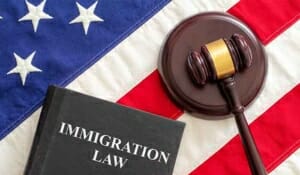Intellectual Property of Professional Athletes
Professional Athlete’s Survival Guide – 2018
Intellectual property is a form of intangible assets that, for many athletes, has great financial value. Sports business transactions involving sponsorship, merchandising, broadcasting, and media deals generally include intellectual property rights. In the sports industry, intellectual property rights are rampant because they apply to teams, sponsors, athletes, and even discrete events.
Trademarks
A trademark is a word, phrase, design, symbol, shape, or logo that distinguishes your goods and services from someone else’s. The purpose of trademark law is to avoid consumer confusion over whose product or service is being offered. Pepsi-Cola does not want consumers thinking that a can of Coke is actually a can of Pepsi. Hence, its design or logo is different. You can register a trademark with the United States Patent and Trademark Office as well as with the state, but you do not have to register it in order to own the trademark. Registration is simply proof of ownership and makes it easier to establish and enforce that ownership right.
Athletes can have trademark rights. Usain Bolt holds several U.S. trademarks, the most recognizable of which is the Bolt icon. There are trademarks on catchy phrases. Maybe not the first, but one of the earliest and most notable, was Pat Riley trademarking the term “three-peat” in 1989, when he was coach of the Los Angeles Lakers. Now, the practice has accelerated as athletes seek to extend their brands. Darrelle Rivas trademarked the phrase “Welcome to Revis Island,” and Tim Tebow trademarked maybe the somewhat corny “Tebowing.”
Some athletes are very aggressive in their branding and hold multiple trademarks. Tiger Woods reportedly has 17 trademarks, and Tom Brady recently filed for upwards of 12 trademarks, while other notable athletes have none.
You snooze, you lose. On January 4, 2006, University of Texas quarterback Vince Young scored the winning touchdown in the national title game against USC. The next day, someone else filed a trademark application for his initials “VY” and his nickname “Invincible.” Young sued for trademark infringement, and the case was recently settled.
Not all phrases can be trademarked; there has to be some originality, meaning you cannot use a generic name for goods and services. Also, trademarks cannot be deceptive or cause confusion with another registered mark.
Privacy/Publicity Rights
Every person, athletes included, has certain privacy rights. Every state recognizes some form of privacy rights, which are either protected by statute or by court decisions. In many states, privacy rights have four components: (1) intrusion upon the person’s seclusion or private affairs; (2) public disclosure of embarrassing private facts; (3) publicity placing one in a false light in the public eye; and, of particular importance to many athletes, (4) misappropriating a person’s name or likeness.
The point here is no one else should profit off of your name and accomplishments. For athletes, misappropriation of one’s likeness or image is the right most frequently infringed. Image rights are those rights that belong to a person to decide when, how, and by whom their physically recognizable features (image, voice, name) can be reproduced or published. Some states, like California, have a statute that prohibits a person from using another person’s name, voice, signature, photograph or likeness in any manner or in any product, merchandise, good, or for advertising or soliciting purposes without that person’s consent. In Arizona, misappropriating one’s likeness is considered a form of unfair competition.
These rights are frequently implicated in endorsement contracts where a sponsor is given the right to use the athlete’s name, image, or likeness in connection with some advertisement for the sponsor’s product.
Copyright
Copyright law protects original works of authorship, including books, articles, plays, poems, music, drawings, paintings, sculptures, radio and television broadcasts, photographs, film, or any other tangible medium of expression. Copyright protection has its origin in the U.S. Constitution. The owner of the copyright has the exclusive right to reproduce, distribute and display the work.
Here’s an interesting question: Who owns the tattoos that are adorned by many professional athletes? What about the photographer who photographs an athlete? The photographer has a copyright in the photograph, but the athlete has the right not to have someone misappropriate his likeness. The answer: It depends … on a lot of things.
These Rights Help Build a Brand
Intellectual property rights are hugely important in an athlete creating a recognizable brand. Like many things in the law, it can be complicated, but it can also provide long-term economic success.
Schneider & Onofry can provide the reputable and personalized attention you need to anticipate and avoid these consequences. Contact Chuck Onofry
at conofry@soarizonalaw.com
or (602) 200-1280. Mention you were referred by the NFLPA.















